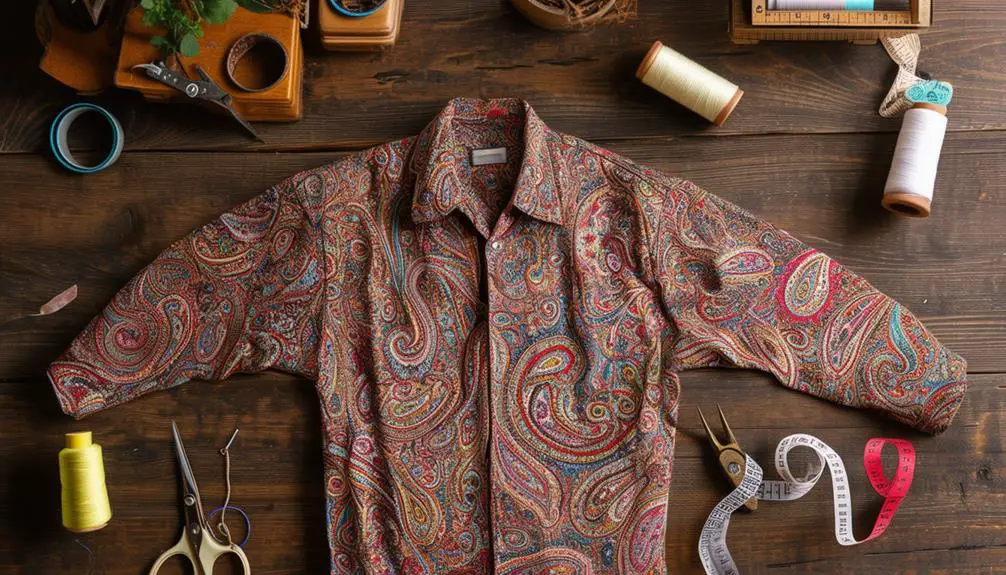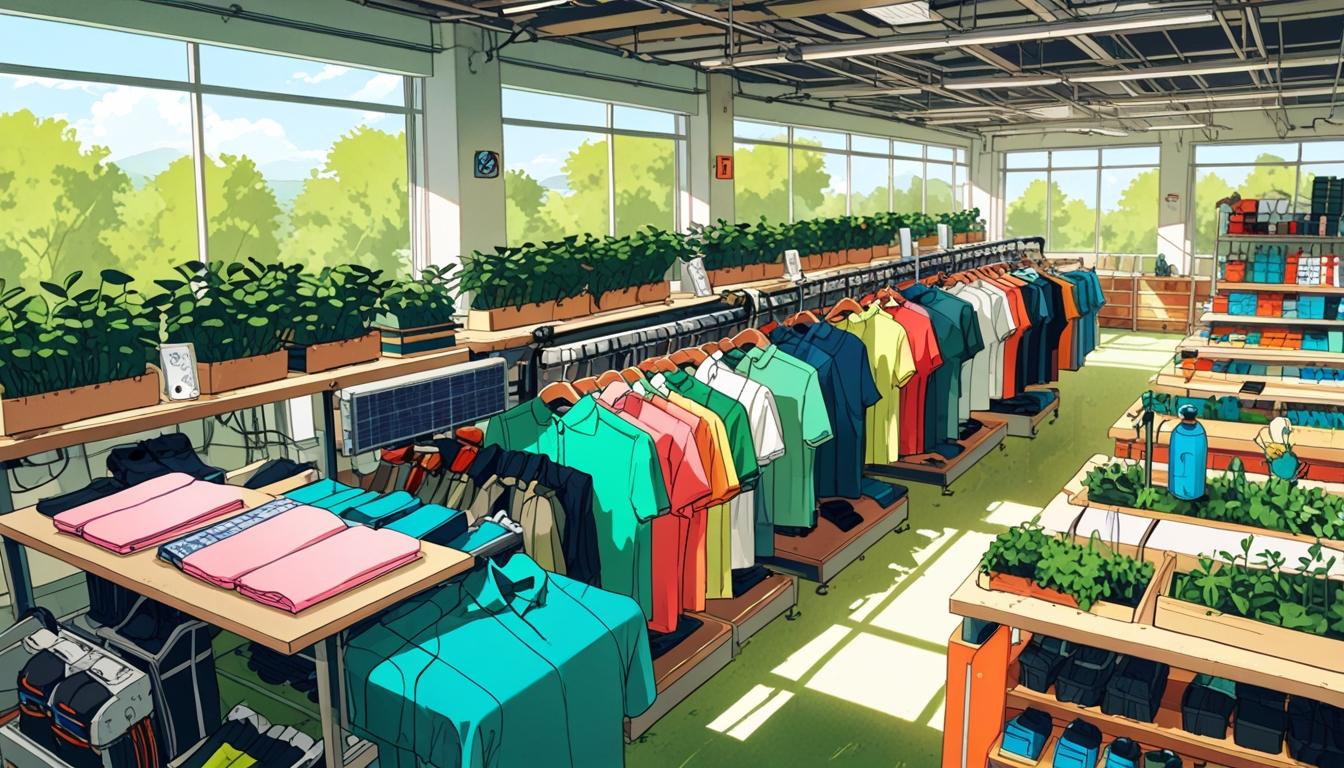In the mid-1930s, fashion brands like Chanel and Schiaparelli revolutionized women's wear with modern elegance and bold colors. For men, labels like Arrow and Manhatten introduced tailored suits and stylish shirts that blended comfort with class. Iconic accessories such as cloche hats and statement jewelry became must-haves, while innovations like synthetic fibers changed how clothes were made. The era's economic challenges pushed brands to create practical yet stylish options, reflecting the needs of a changing society. If you're curious to explore more about these influential styles and their lasting effects on today's fashion, you're in for a treat!
Key Women's Fashion Brands
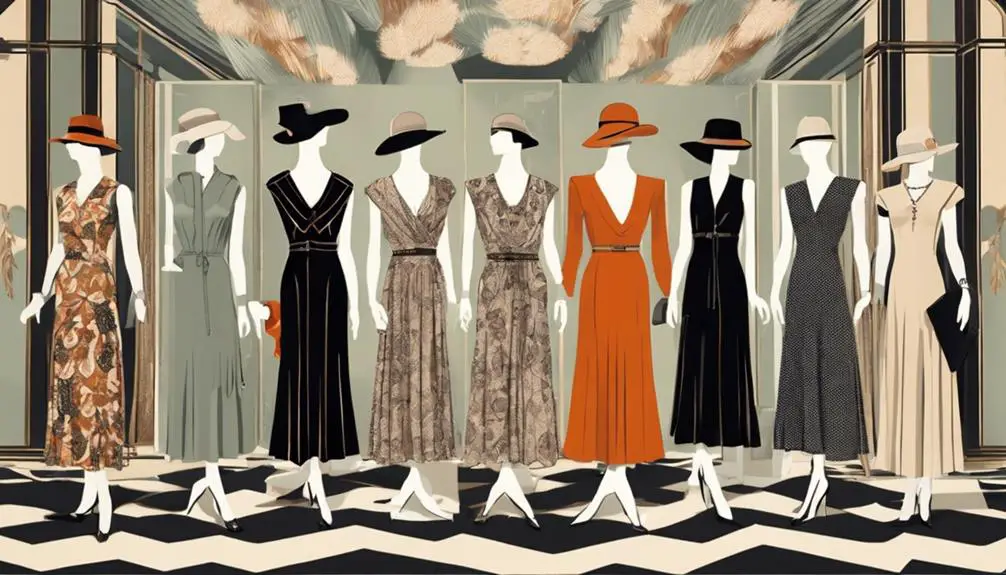
In the vibrant landscape of mid-1930s fashion, several key women's fashion brands emerged, each leaving a distinct mark on style and elegance. One of the most influential was Chanel, who revolutionized women's fashion with her emphasis on casual elegance. She introduced comfortable clothing that allowed women to express themselves freely while also launching the iconic Chanel No. 5 perfume, a symbol of luxury that still resonates today.
Schiaparelli captivated the fashion world with her innovative designs that blended fashion and surrealism. Her daring use of shocking pink and trompe-l'œil techniques added a playful twist to women's clothing, making her a standout designer of the era.
Then there's Madeleine Vionnet, who popularized the bias-cut technique. This method allowed dresses to drape beautifully over the body, emphasizing the natural silhouette and showcasing the elegance that defined her work.
Norman Hartnell gained fame for his exquisite designs for the British royal family, including the stunning coronation gown for Queen Elizabeth in 1937. His regal creations set a high standard in women's fashion.
Meanwhile, Maggy Rouff also embraced the bias-cut style, crafting elegant evening gowns that featured asymmetrical shapes that appealed to the social elite.
These brands not only shaped the fashion of their time but also laid the groundwork for modern styles, creating a legacy that continues to inspire designers today. Each brand captured a unique essence of the mid-1930s, making them unforgettable in the fashion world.
Influential Men's Fashion Labels
During the mid-1930s, influential men's fashion labels emerged, redefining style and quality in men's wardrobes. You'd find that brands like Arrow and Mehringer were essential for offering high-quality Oxford Cloth Button Down (OCBD) shirts. These shirts became integral staples, perfectly blending comfort with style.
As you explored further, you'd discover Dobbs, a prominent hat brand known for its stylish designs and craftsmanship. Their hats added flair to both formal and casual outfits, making them must-haves for any fashionable man.
Another standout was the Manhatten brand, which gained popularity for its tailored suits. These suits marked a significant shift in mens fashion towards fitted silhouettes, departing from the baggier styles of previous years. This embrace of a more tailored look reflected the changing tastes of the era.
Meanwhile, Bostonians specialized in quality footwear. Their well-crafted shoes weren't just stylish; they offered comfort, appealing to men who appreciated both aesthetics and practicality.
Heath-Sweetser, although less recognized today, played an influential role by producing elegant menswear that attracted socialites and the upwardly mobile middle class. This brand understood the desire for high-quality garments that could elevate a man's wardrobe.
Each of these labels contributed uniquely to the fashion landscape of the 1930s. As you look back, it's evident that these brands laid the groundwork for the stylish designs and quality craftsmanship that continue to influence menswear today.
Iconic Accessories and Footwear
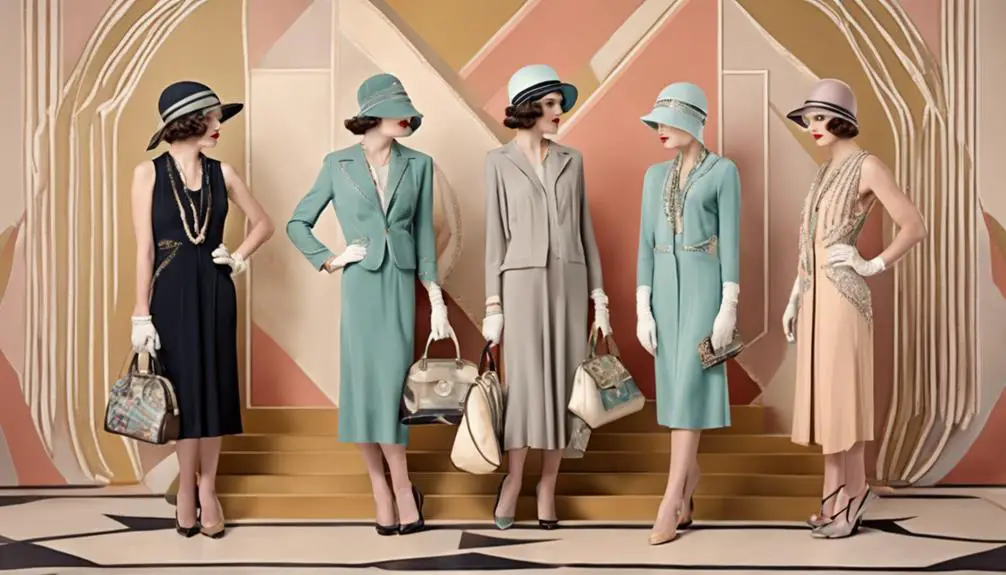
The mid-1930s showcased a vibrant array of iconic accessories and footwear that perfectly complemented the era's fashion. Cloche hats were a must-have, adding elegance to any outfit. Often crafted from felt or straw, these hats featured beautiful adornments like ribbons, feathers, or flowers, making them both stylish and versatile.
Another essential accessory was gloves. You'd find elbow-length styles for evening events, exuding sophistication, while wrist-length gloves were favored for daytime outings. These additions elevated your look, showcasing a refined sense of style.
Handbags of this era were anything but ordinary. With intricate designs often made from leather or fabric, they boasted embellishments like embroidery and Art Deco motifs. These handbags weren't just functional; they were statement pieces that added flair to your ensemble.
When it came to footwear, styles embraced rounded toes and low heels, which were perfect for comfort and femininity. T-straps and Mary Janes gained popularity, making them ideal choices for both casual and dressy occasions.
Lastly, jewelry trends flourished with bold statement pieces. Large brooches, dangling earrings, and layered necklaces, featuring colorful gemstones and intricate metalwork, reflected the glamour of the time.
These accessories allowed you to express your personal style while embracing the artistic spirit of the mid-1930s. Together, these iconic accessories and footwear defined an era of elegance, making your look both timeless and unforgettable.
Fabric Innovations and Techniques
Fashion in the mid-1930s transformed dramatically with the advent of innovative fabrics and techniques that made clothing more accessible and appealing. Designers like costume designer Gilbert Adrian led the way in incorporating synthetic fibers, such as rayon and nylon, into their collections. These materials were lighter, more affordable, and versatile, enhancing the fluidity and comfort of garments. This shift allowed you to embrace styles that were both practical and stylish.
Additionally, the introduction of polyester began to influence garment design, as it offered anti-wrinkle properties and durability, making it a favored choice for many designers key characteristics aid in identification of polyester garments.
One of the standout techniques from this era was the bias-cut, pioneered by designers like Madeleine Vionnet. This method allowed dresses to hug your natural curves without the need for restrictive undergarments, creating a relaxed yet elegant silhouette. You could easily move and feel confident in your attire.
The introduction of zippers changed the game, making garments more functional. Zippers streamlined the dressing process, allowing for quick outfit changes and adding a modern touch to the design. Lightweight fabrics like silk became popular for eveningwear, while wool and tweed were favored for tailored suits, reflecting the decade's focus on both practicality and style.
Art Deco influences also played a significant role in fashion, with geometric patterns becoming a staple in textiles. These patterns added visual interest to dresses and accessories, capturing the bold spirit of the time. As you explored mid-1930s fashion, it was clear that these innovations not only shaped individual styles but also transformed the entire industry.
Cultural Impact on Fashion Brands
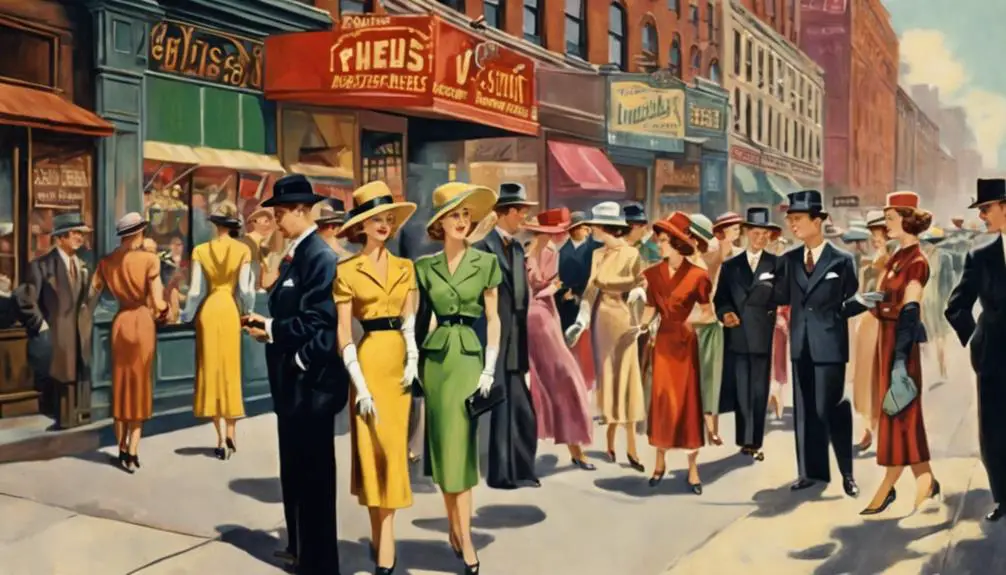
Innovative fabrics and design techniques in the mid-1930s didn't just change the way people dressed; they also reshaped the cultural landscape surrounding fashion brands. The Great Depression forced designers to simplify their creations, leading to more affordable options for consumers struggling with economic hardships. This shift made fashion accessible to a wider audience while preserving a sense of style and elegance.
Significantly, brands like Calvin Klein later emerged by embracing modern trends and inclusivity, demonstrating the ongoing evolution of fashion. Hollywood's influence played a significant role during this era, with stars showcasing brands like Levi Strauss & Co., which popularized denim. Suddenly, denim became a staple in casual wear, symbolizing a blend of practicality and style. Fashion magazines like Vogue and Harper's Bazaar elevated brands' visibility by featuring their designs prominently, turning them into household names.
With the rise of the working woman, fashion brands responded by creating versatile clothing that combined functionality with fashion. This cultural shift meant women needed outfits that could adapt from the office to social events. Designers like Coco Chanel and Elsa Schiaparelli embraced this change, inspiring mass-market adaptations that made their styles accessible to everyday women.
The mid-1930s were a time of remarkable transformation in fashion. It wasn't just about looking good; it was about reflecting the realities of life during a challenging period. Brands adapted to the needs of their consumers, allowing elegance to coexist with practicality.
As you explore this vibrant era, you'll see how these cultural influences continue to shape fashion today.


